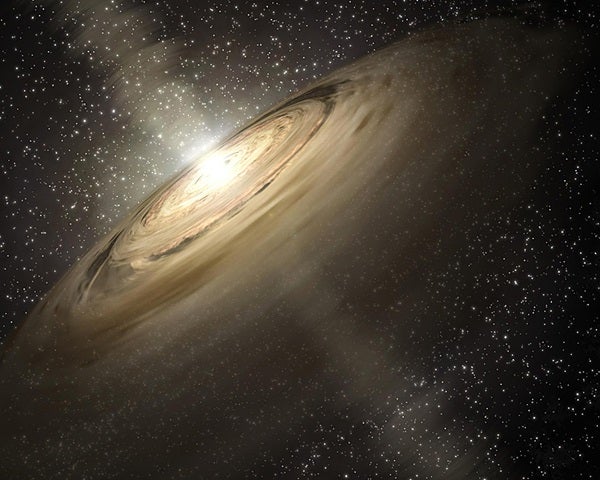Countless theories, simulations, and geologic observations support such a scenario. But there remains one lingering mystery: If Earth arose from the collision of asteroids, its composition should resemble that of meteoroids, the small particles that break off from asteroids.
But to date, scientists have found that, quite literally, something doesn’t add up: Namely, Earth’s mantle — the layer between the planet’s crust and core — is missing an amount of lead found in meteorites whose composition has been analyzed following impact with Earth.
Much of Earth is composed of rocks with a high ratio of uranium to lead — uranium naturally decays to lead over time. However, according to standard theories of planetary evolution, Earth should harbor a reservoir of mantle somewhere in its interior that has a low ratio of uranium to lead to match the composition of meteorites. But such a reservoir has yet to be discovered — a detail that leaves Earth’s origins hazy.
Now, researchers at the Massachusetts Institute of Technology’s (MIT) Department of Earth, Atmospheric and Planetary Sciences in Cambridge have identified a “hidden flux” of material in Earth’s mantle that would make the planet’s overall composition more similar to that of meteorites. This reservoir likely takes the form of extremely dense, lead-laden rocks that crystallize beneath island arcs, strings of volcanoes that rise up at the boundary of tectonic plates.
As two massive plates push against each other, one plate subducts, or slides, under the other, pushing material from the crust down into the mantle. At the same time, molten material from the mantle rises up to the crust and is ejected via volcanoes onto Earth’s surface.
According to the MIT researchers’ observations and calculations, however, up to 70 percent of this rising magma crystallizes into dense rock, dropping, lead-like, back into the mantle, where it remains relatively undisturbed. The lead-heavy flux, they say, puts the composition of Earth’s mantle on a par with that of meteorites.
“Now that we know the composition of this flux, we can calculate that there’s tons of this stuff dropping down from the base of the crust into the mantle, so it is likely an important reservoir,” said Oliver Jagoutz from MIT. “This has a lot of implications for understanding how the Earth evolved through history.”
A mantle exposed
Measuring the composition of material that has dropped into the mantle is a nearly impossible task. Jagoutz estimates that such dense rocks would form at a depth of 25 to 31 miles (40 to 50 kilometers) below the surface, beyond the reach of conventional sampling techniques.
There is, however, one place on Earth where such a depth of the crust and mantle is exposed — a region of northern Pakistan called the Kohistan arc. Forty million years ago, this island arc was crushed between India and Asia as the two plates collided.
“When India came in, it slammed into the arc, and the arc extended and rotated itself,” Jagoutz said. “Because of that, we now have a cross-section of the mantle-to-crust transition. This is the only place on Earth where this exists.”
On various trips from 2000 to 2007, Jagoutz trekked through the Kohistan arc region, collecting rocks from various parts of the arc’s crust and mantle. Bringing them back to the lab, he analyzed the rocks’ density and composition, discovering that some were “density-unstable” — much denser than the mantle. These denser rocks could potentially sink into the mantle, creating a hidden reservoir.
Adding up to an asteroid origin
The researchers measured the rocks’ composition and found that the denser rocks contained more lead than uranium — exactly the ratio predicted for the missing reservoir of material. Jagoutz then performed a mass balance — a simple conservation-of-mass calculation — to determine how much dense rock drops into the mantle, based on the composition of the region’s crust, rocks, and mantle. Essentially, the mass of the Kohistan arc, minus whatever material drops into the mantle, should equal the material that comes out of the mantle.
Jagoutz and Schmidt solved the equation for 10 common elements. From their calculations, they found that 70 percent of the magma that rises from the mantle must ultimately drop back down, relatively heavy with lead. Applying this statistic to other island arcs in the world, such as the Andean volcanic belt and the Cascade Range, they found that the amount of material dropped into the mantle globally equals the composition and quantity of the so-called missing reservoir — a finding that suggests that Earth did indeed form from the collision of meteorites.
“If we are right, one of the questions we have is: Why is the Earth capable of hiding something from us? Why is there never a volcano that brings up these rocks?” Jagoutz adds. “You’d think it’d come back up, but it doesn’t. It’s actually interesting.”










